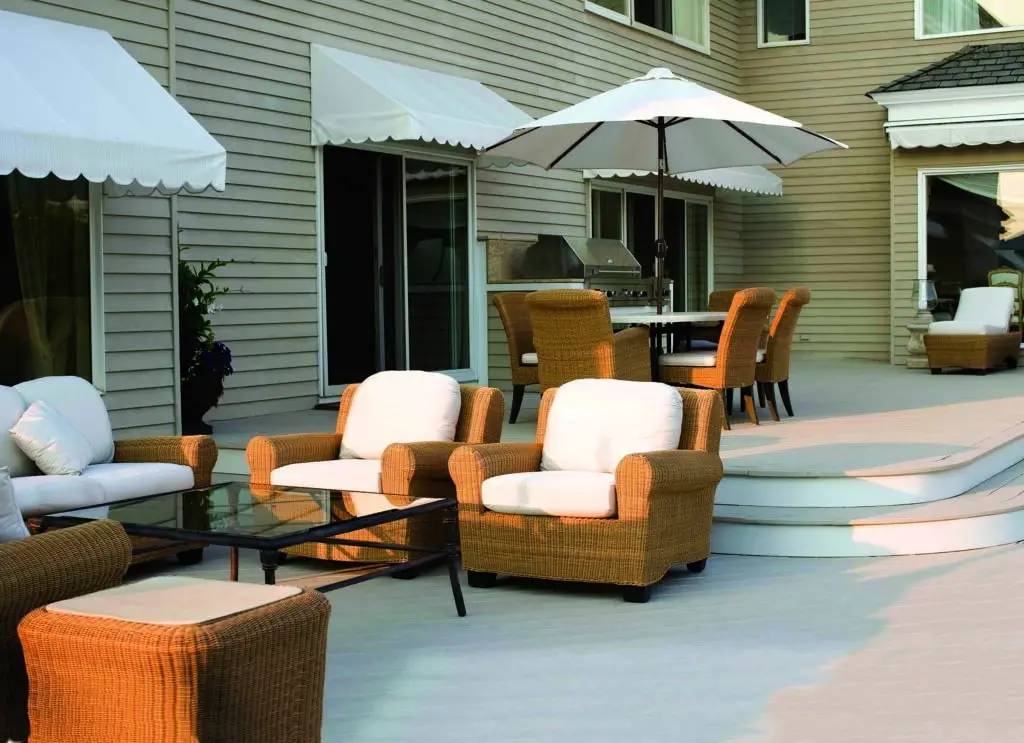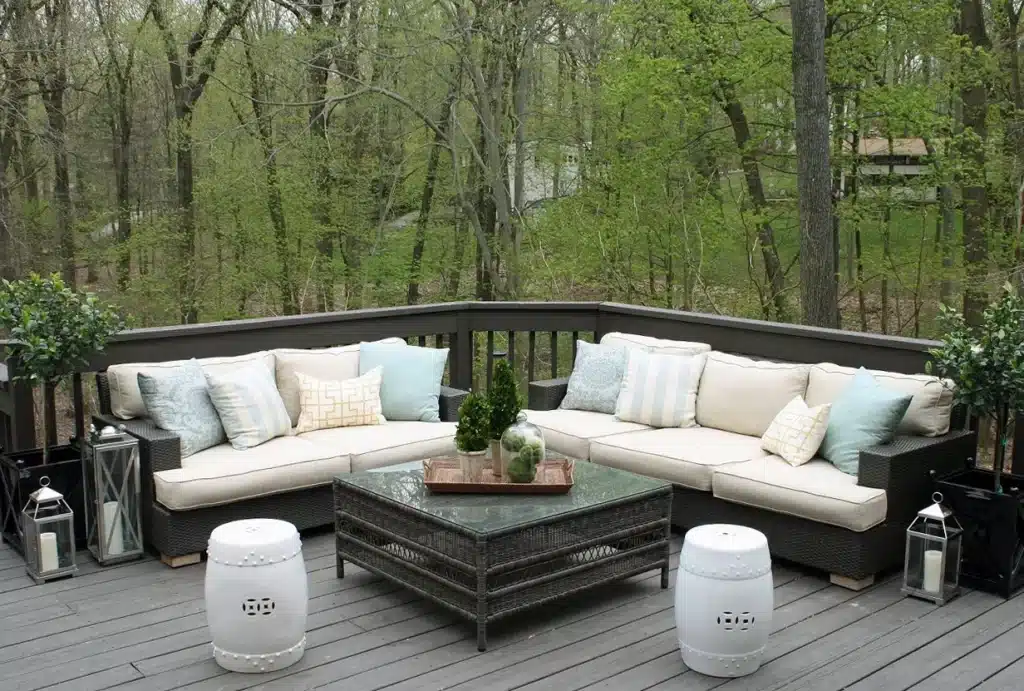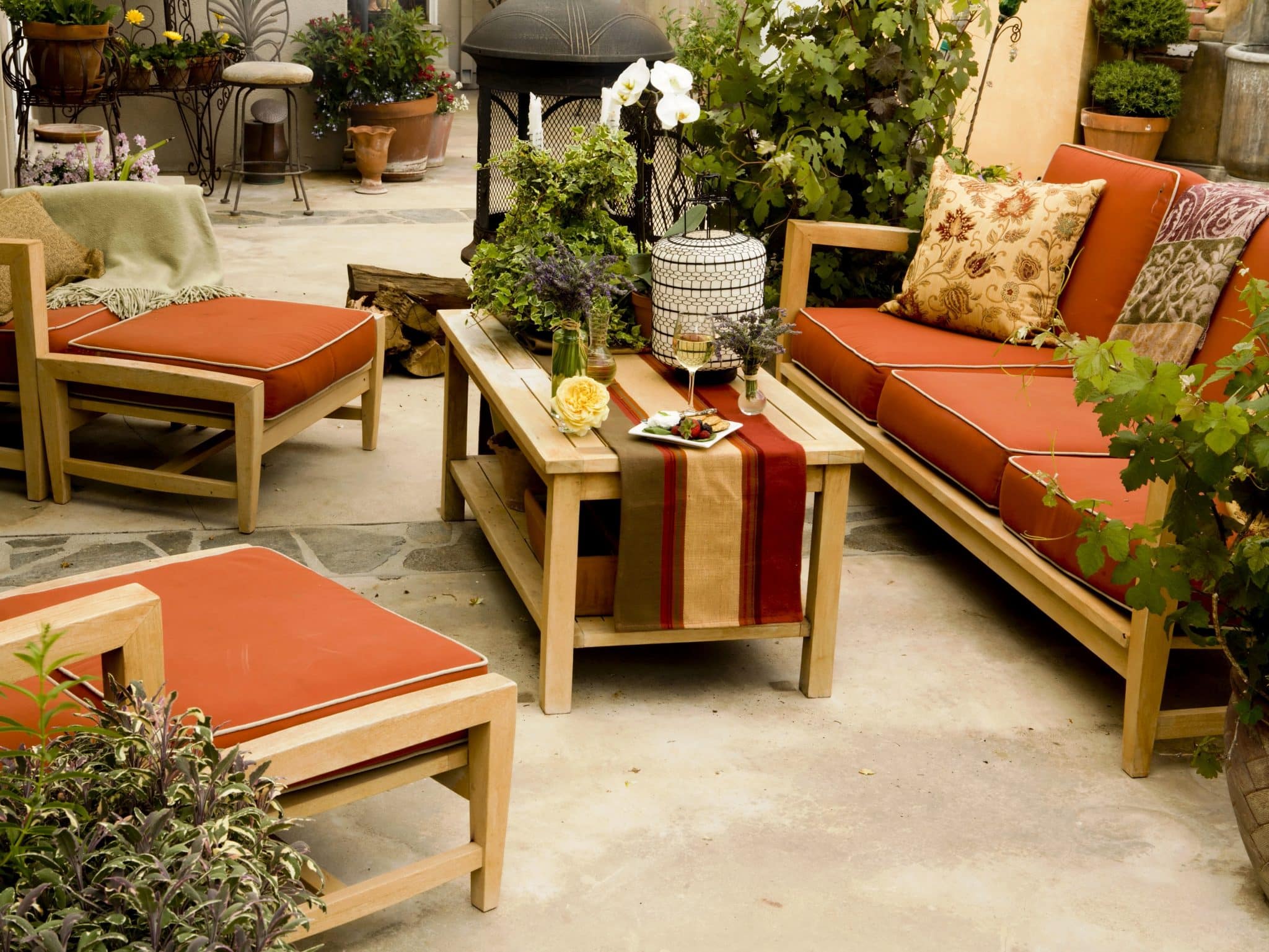How To Get Mold Out Of Patio Cushions
Introduction
How To Get Mold Out Of Patio Cushions: Mold can be a common problem for patio cushions, especially if they are left outside and exposed to moisture. Not only does mold make your cushions look unsightly, but it can also cause health issues if left untreated. Fortunately, there are several effective methods for removing mold from patio cushions and restoring them to their original condition.
One of the first steps in getting rid of mold on patio pavers cushions is to thoroughly clean the affected area. Start by removing the cushions from the patio furniture and brushing off any loose mold spores. Next, fill a bucket with warm water and add a mild detergent or bleach solution. Use a scrub brush or sponge to gently scrub the moldy areas, making sure to reach all the crevices and corners. Rinse the cushions thoroughly with clean water and allow them to air dry in a well-ventilated area.
If the mold stains are stubborn and refuse to come off with regular cleaning, you may need to use a stronger solution. Mix equal parts of water and white vinegar in a spray bottle and generously spray the affected areas. Let the vinegar solution sit for about 15 minutes to allow it to penetrate the mold. Then, scrub the cushions with a brush or sponge and rinse them thoroughly. Vinegar is a natural disinfectant and can effectively kill mold spores.

What kills mold in outdoor cushions?
Mold is a common problem that can occur on outdoor cushions, especially in humid and damp environments. It not only looks unsightly but can also cause health issues if left untreated. Therefore, it is important to know how to effectively kill mold on outdoor cushions to maintain their cleanliness and prolong their lifespan.
One of the most effective ways to kill mold in outdoor cushions is by using a bleach solution. Bleach is a powerful disinfectant that can effectively kill mold spores and prevent them from regrowing. To use bleach, mix one part bleach with three parts water in a spray bottle. Spray the solution onto the affected areas of the cushion and let it sit for about 15 minutes. Then, scrub the moldy areas with a brush or sponge to remove the mold. Rinse the cushion thoroughly with water to remove any remaining bleach solution. Make sure to wear gloves and protective eyewear when working with bleach.
Vinegar is another natural remedy that can be used to kill mold on outdoor cushions. Vinegar is a mild acid that has antimicrobial properties, making it effective in killing mold. To use vinegar, fill a spray bottle with undiluted white vinegar and spray it onto the moldy areas of the cushion. Let it sit for about an hour, then scrub the moldy areas with a brush or sponge. Rinse the cushion thoroughly with water to remove any vinegar residue. Vinegar has a strong smell, but it will dissipate once the cushion is dry.
How do you get black mold out of patio cushions?
Black mold can be a common problem on patio cushions, especially if they are exposed to moisture or stored in a damp environment. Not only does black mold look unsightly, but it can also pose health risks if left untreated. Fortunately, there are several methods you can use to effectively remove black mold from your patio cushions.
One method to get rid of black mold on patio cushions is to use a mixture of bleach and water. Start by filling a bucket with one part bleach and three parts water. Then, using a scrub brush or sponge, apply the bleach mixture to the affected areas of the cushion. Scrub the moldy spots thoroughly, making sure to remove all traces of mold. After scrubbing, rinse the cushion with clean water and allow it to air dry in the sun. This method can be effective in killing and removing black mold, but it is important to use caution when working with bleach, as it can be harmful if not used properly.
Another option for removing black mold from patio cushions is to use vinegar. Vinegar is a natural disinfectant and can help kill mold spores. To use vinegar, fill a spray bottle with undiluted white vinegar and spray it directly onto the moldy areas of the cushion. Allow the vinegar to sit for a few minutes, then scrub the moldy spots with a brush or sponge. Rinse the cushion with clean water and allow it to air dry. Vinegar is a safer alternative to bleach and can be just as effective in removing black mold.
How do you get mold out of fabric patio furniture?
Mold can be a common problem when it comes to fabric patio furniture, especially if it is exposed to moisture or stored in a damp environment. If left untreated, mold can not only ruin the appearance of your furniture but also pose health risks. Therefore, it is important to know how to effectively remove mold from fabric patio furniture.
Firstly, it is essential to assess the extent of the mold growth on your fabric patio furniture. If the mold is limited to a small area, you may be able to tackle it yourself. However, if the mold has spread extensively or if you have respiratory issues, it is advisable to seek professional help.
Before attempting to remove the mold, it is important to take precautions to prevent the spread of spores. Start by wearing protective gloves, a mask, and goggles to protect yourself. Additionally, it is recommended to work outdoors or in a well-ventilated area to minimize exposure to mold spores.
To begin the cleaning process, start by vacuuming the fabric patio furniture to remove any loose mold spores. Use a vacuum cleaner with a HEPA filter to ensure that the spores are effectively trapped and not released back into the air. After vacuuming, dispose of the vacuum bag or clean the canister thoroughly to prevent the spread of mold.
Next, create a cleaning solution by mixing equal parts of white vinegar and water in a spray bottle. Vinegar is a natural disinfectant and can effectively kill mold spores. Spray the solution onto the affected areas of the fabric patio furniture and let it sit for about 15 minutes. This will allow the vinegar to penetrate the mold and loosen its grip on the fabric.
What is the best mold remover for cushions?
When it comes to removing mold from cushions, it is important to choose the best mold remover that is effective and safe for the material. Mold can be a common problem, especially in humid environments or if the cushions have been exposed to moisture. Mold not only looks unsightly but can also cause health issues if left untreated. Therefore, finding the right mold remover is crucial to ensure the cushions are clean and free from mold.
One of the best mold removers for cushions is a mixture of vinegar and water. Vinegar is a natural disinfectant and has antimicrobial properties that can effectively kill mold spores. To use this method, mix equal parts of white vinegar and water in a spray bottle. Spray the solution onto the affected areas of the cushions and let it sit for a few hours. Then, scrub the cushions with a brush or sponge to remove the mold. Rinse the cushions thoroughly with water and allow them to air dry.
Bleach is another effective mold remover for cushions. However, it is important to use bleach with caution as it can damage certain fabrics and colors. Before using bleach, check the care instructions of the cushions to ensure they can withstand the bleach treatment. If the cushions are bleach-safe, mix one part bleach with three parts water and apply the solution to the moldy areas. Let it sit for a few minutes, then scrub the cushions gently. Rinse thoroughly and allow them to dry completely.
Can you get mold out of outdoor fabric?
Yes, it is possible to get mold out of outdoor fabric. Mold is a common problem that can occur on outdoor fabrics due to the presence of moisture and humidity. However, with the right techniques and products, you can effectively remove mold and restore the fabric to its original condition.
Mold is a type of fungus that thrives in damp and humid environments. It can easily grow on outdoor fabrics such as cushions, umbrellas, and awnings if they are not properly maintained. Mold not only looks unsightly but can also cause health issues such as allergies and respiratory problems.
To get mold out of outdoor fabric, the first step is to remove the fabric from the outdoor area and bring it indoors. This will prevent the mold spores from spreading further and causing more damage. Next, you should brush off any loose mold spores from the fabric using a soft brush or cloth.
Once the loose mold spores have been removed, you can treat the fabric with a mold and mildew cleaner. There are several commercial cleaners available that are specifically designed to remove mold and mildew from fabrics. These cleaners usually come in spray or liquid form and can be applied directly to the affected areas.
After applying the cleaner, you should let it sit on the fabric for the recommended amount of time as stated on the product label. This will allow the cleaner to penetrate the mold and break it down. Once the recommended time has passed, you can rinse off the fabric with water to remove the cleaner and any remaining mold spores.
How frequently should patio cushions be cleaned to prevent mold growth?
To prevent mold growth on patio cushions, it is important to clean them regularly. The frequency of cleaning will depend on various factors such as the climate, usage, and exposure to moisture. In general, it is recommended to clean patio cushions at least once every season or every three to six months.
Regular cleaning helps to remove dirt, dust, and other debris that can contribute to mold growth. It also allows you to inspect the cushions for any signs of mold or mildew and take necessary actions promptly. Additionally, cleaning the cushions regularly helps to maintain their appearance and prolong their lifespan.
Are there any preventative measures that can be taken to avoid mold growth on patio cushions?
Yes, there are several preventative measures that can be taken to avoid mold growth on patio cushions. Firstly, it is important to keep the cushions clean and dry at all times. Regularly brushing off any dirt or debris and allowing the cushions to fully dry after rain or cleaning can help prevent mold from forming. Additionally, it is recommended to store the cushions in a dry and well-ventilated area when they are not in use. This can help prevent moisture buildup and create an environment that is less conducive to mold growth.
Another preventative measure is to use patio cushion covers that are made from mold-resistant materials. These covers are designed to repel moisture and inhibit the growth of mold and mildew. Investing in high-quality covers can provide an extra layer of protection for your patio cushions. Additionally, using cushions that are made from quick-drying materials can also help prevent mold growth. These materials are designed to dry quickly and efficiently, reducing the chances of moisture being trapped and mold forming.

Conclusion
Having mold on your patio cushions can be a frustrating and unsightly problem. Mold not only ruins the appearance of your cushions but also poses health risks. However, with the right techniques and products, you can effectively remove mold from your patio cushions and restore them to their original condition. In this article, we will discuss some effective methods to get mold out of patio cushions.
Vinegar is a natural and effective solution for removing mold from patio furniture. To use this method, mix equal parts of white vinegar and water in a spray bottle. Spray the solution onto the moldy areas of the cushions and let it sit for about 15 minutes. Then, scrub the cushions with a brush or sponge to remove the mold. Rinse the cushions thoroughly with water and allow them to air dry in the sun. The acidity of vinegar helps kill the mold spores and prevent further growth.
If the mold on your patio cushions is stubborn and difficult to remove, you can use a bleach solution. Mix 1 cup of bleach with 1 gallon of water in a bucket. Dip a sponge or brush into the solution and scrub the moldy areas of the cushions. Allow the solution to sit on the cushions for about 10 minutes before rinsing them thoroughly with water. Be cautious when using bleach, as it can discolor or damage certain fabrics. Test the solution on a small, inconspicuous area of the cushions before applying it to the entire surface.








